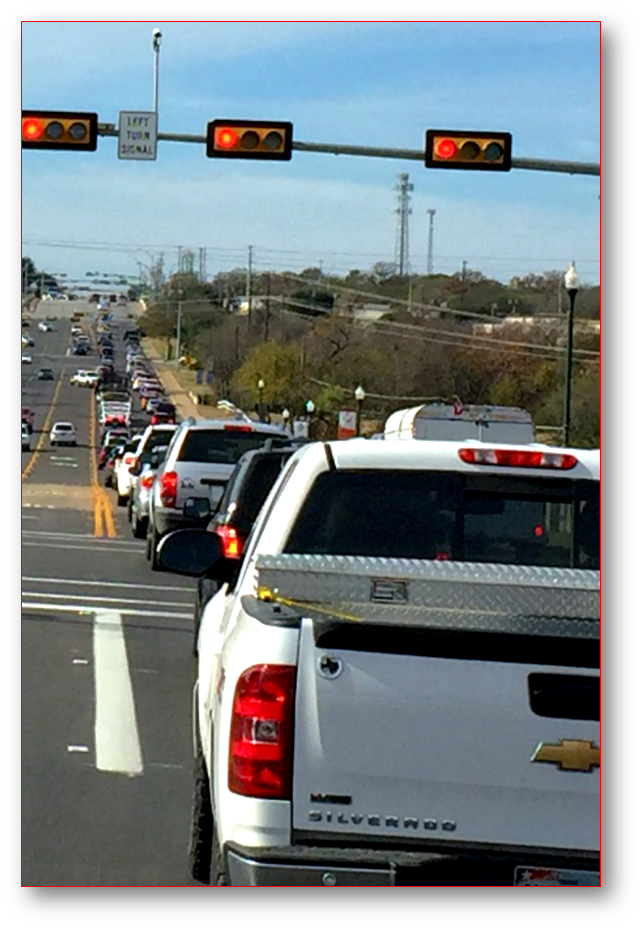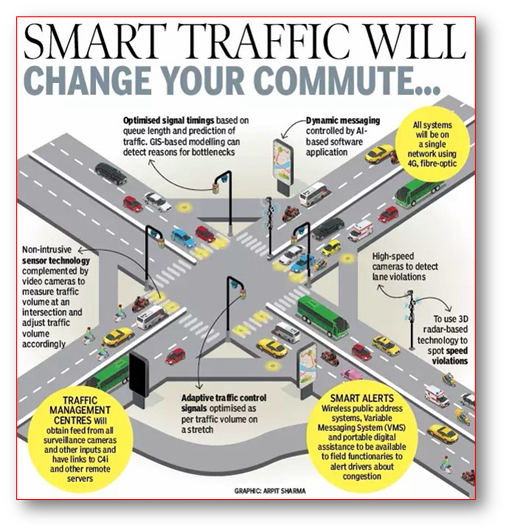With the appointment of a 16 member Citizen Advisory Committee on July 14th, City Council has started work on building a mobility bond pac kage that voters will decide up or down in May 2021.
kage that voters will decide up or down in May 2021.
The City has kicked off their public engagement phase with an online survey. I strongly encourage you to complete the online survey (web link to survey).
Since we will be voting on the bond package next May, our opinions and priorities are critical to the process. Feel free to share the survey site with your friends and neighbors…the more the better.
With Georgetown being one of the fastest growing cities in the nation, we need to ensure we invest our tax dollars on projects that protect and enhance our community’s quality of life. We will have to live with the decisions we make next May for years to come. Typically, mobility bonds packages build bigger, wider roads, but does that always really help us? When we build wider roads through our neighborhoods, we are inviting more traffic to travel on those wider roads.
Instead of just building more concrete infrastructure, maybe we should also be investing in new ideas that can help solve our existing traffic congestion. Enter Intelligent Transportation Systems (ITS) that can help move more traffic faster through our existing roadways.
Let’s be a “Smart City” and think about how and where we invest our hundreds of millions of dollars to improve Georgetown’s future.
According to the City, the areas of focus of the mobility bond are:
- “Increasing capacity of Georgetown’s roadway network and bridges with high traffic volume.
- Improving intersections, building sidewalks, and enhancing safety throughout Georgetown to create new connections within and among neighborhoods.
- Coordinating with other planned transportation work, including projects identified in our Pedestrian and Bike master plans, to accelerate delivery to Georgetown residents”
I know we have to expand some of our roads and build new roads to help us get around town. I took the photo above of a 2017 traffic backup on University Ave at Scenic Dr. I was trying to get to Walgreens to pick a few things up for my Dad, but was stuck at the intersection quite awhile, so I got out of my car and took the photo…I didn’t have anything better to do.
So, to solve that traffic backup, do we expand University Ave or do we build a new ITS infrastructure using adaptive signals like Bellevue, Washington did on Factoria Boulevard. Bellevue is a fast growing city of about 145,000 west of Seattle. The installed new adaptive intersection signals that adjust in real-time to traffic conditions. According to City officials, those investments have led to significant declines in both the hassle and cost of traveling in their City.
Imagine, what this means. This is an excerpt from a 2015 article about Bellevue’s Fractoria Boulevard.
“The traffic signals generally don’t flash the same stretch of green twice in a row, especially at rush hour. At 9:30 am, the full red/yellow/green signal cycle might be 140 seconds. By 9:33 am, a burst of additional traffic might push it to 145 seconds. Less traffic at 9:37 am could push it down to 135. Just like the traffic itself, the timing of the signals fluctuates.”
Think about it…this was a solution implemented back in 2015. Just imagine how Adaptive Signal Technology has advanced over the last 5 years. A few years ago, the City in partnership with TxDOT and CAMPO (Capital Metropolitan Transportation Authority) to look at the Williams Dr Corridor. One of their solutions they implemented was enhancing traffic signals from Interstate 35 to DB Wood Rd. I noticed a major improvement.
Adaptive traffic signal systems have been proven to:
- Continuously distribute green time for all traffic movements
- Reduce traffic delay and congestion by creating smoother flow
- Improve travel time reliability and decrease travel time variability
- Decrease idling time to reduce wear and tear on roads
- Decrease vehicle emissions
- Prolong the effectiveness of traffic signal timing
I bet you are wondering why I’m focusing so much on traffic signals…that’s TxDOT issue, right? Nothing the City could do about it, right? TxDOT is the one that can’t seem to sync traffic signals on University between Main St and Austin Ave or between Scenic Dr. and Wolfe Ranch, right?
Well, beginning in January 2021, TxDOT will be transferring all their traffic signals to the City of Georgetown to manage, sync and maintain. So, it’s going to be up to the City to find a way to move traffic faster and smoother.
I think Smart Traffic Systems should be a serious consideration for the City. These systems cost money to build, though not nearly as much as new roads. It also doesn’t take as long to implement them as it does to design and build/expand new roads. That’s why I hope the Citizen Advisory Committee and City Council will consider new Smart ideas and solutions as they select the transportation projects for the 2021 Mobility Bond package.
I think “Smarter” roads are sometimes better than just bigger and wider roads. I’m hoping we are going to see a little of both in the Bond package that the City Council puts on the May 2021 ballot.
Remember, take the 2021 Mobility Bond online survey at https://engagekh.com/georgetownmobilitybond/survey1.
